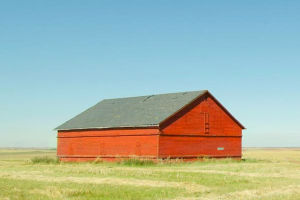Hey there, Lyykers! There's nothing quite like curling up with a good book, but did you know that improper storage can lead to mildew growth on your beloved volumes?
Protecting Your Books from Mildew: Essential Tips
Mildew thrives in damp, dark conditions, which can spell disaster for your cherished collection. Let's explore some effective ways to protect your books from mildew and keep them in pristine condition!
Understanding Mildew
Mildew is a type of fungus that flourishes in warm, humid environments. It can manifest as a thin, powdery layer on surfaces, including the pages of books, leading to discoloration, odors, and potential damage. Protecting your books from mildew not only preserves their beauty but also ensures they remain safe to read.
Tips for Preventing Mildew Growth on Books
1. Control Humidity Levels
Ideal Range: Aim to keep humidity levels between 30% and 50%. Use a hygrometer to monitor the moisture in your storage area.
Dehumidifiers: Consider using a dehumidifier in rooms prone to humidity, such as basements or attics, to maintain a dry environment.
2. Choose the Right Storage Location
Cool, Dry Areas: Store books in well-ventilated, cooler spaces away from direct sunlight and moisture sources, like bathrooms or kitchens.
Avoid Dampness: Keep books away from exterior walls where condensation can accumulate.
3. Use Appropriate Shelving
Material Matters: Opt for metal or sealed wood shelves that resist moisture. Avoid untreated wood, as it can retain humidity.
Spacing: Arrange books upright with some space between them to promote airflow. Overcrowding can trap moisture.
4. Protective Covers
Book Covers: Use breathable book covers to protect your books from dust and moisture. Avoid plastic covers, as they can trap humidity.
Boxes: Store valuable or rare books in acid-free boxes to provide extra protection against moisture.
Smelly books: How to easily kill/remove mildew and mold spores
Video by Mad Maine
5. Regular Cleaning
Dusting: Regularly dust your books and shelves to prevent dirt buildup, which can attract moisture. Use a soft cloth or microfiber duster.
Check for Signs: Inspect your collection periodically for any signs of mildew or dampness. Early detection is key!
6. Use Absorbent Materials
Silica Gel Packs: Place silica gel packets or activated charcoal bags among your books to absorb excess moisture. Replace them regularly to maintain effectiveness.
Baking Soda: An open box of baking soda can help absorb odors and moisture. Just remember to replace it every few months.
7. Temperature Control
Avoid Extremes: Keep your storage area at a consistent temperature, ideally between 60°F and 75°F. Extreme temperature fluctuations can promote moisture buildup.
8. Consider Airflow
Ventilation: Ensure your storage area has good ventilation. Open windows occasionally (weather permitting) or use fans to promote airflow.
Avoid Plastic Bins: While they seem like a good option for storage, plastic bins can trap moisture. Opt for breathable materials instead.
Fun Facts About Book Preservation
The Oldest Book: The oldest known book, the "Diamond Sutra," dates back to 868 AD. Keeping books in good condition helps preserve their history!
Library Protection: Many libraries use climate control systems to maintain ideal humidity and temperature levels for book preservation.
By following these tips, you can create a protective environment for your books and enjoy them for years to come. Remember, a little effort goes a long way in safeguarding your literary treasures from mildew. So, let's keep those pages turning and those stories alive! What's the first book you plan to protect?


